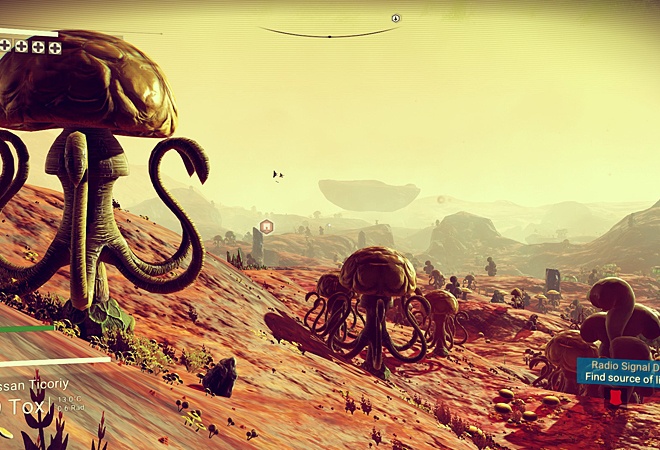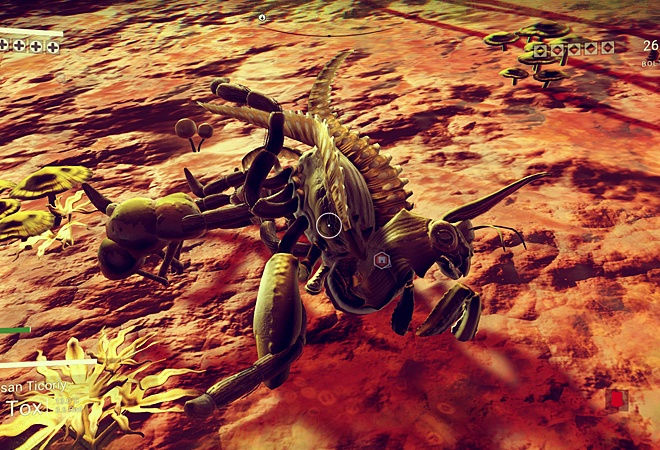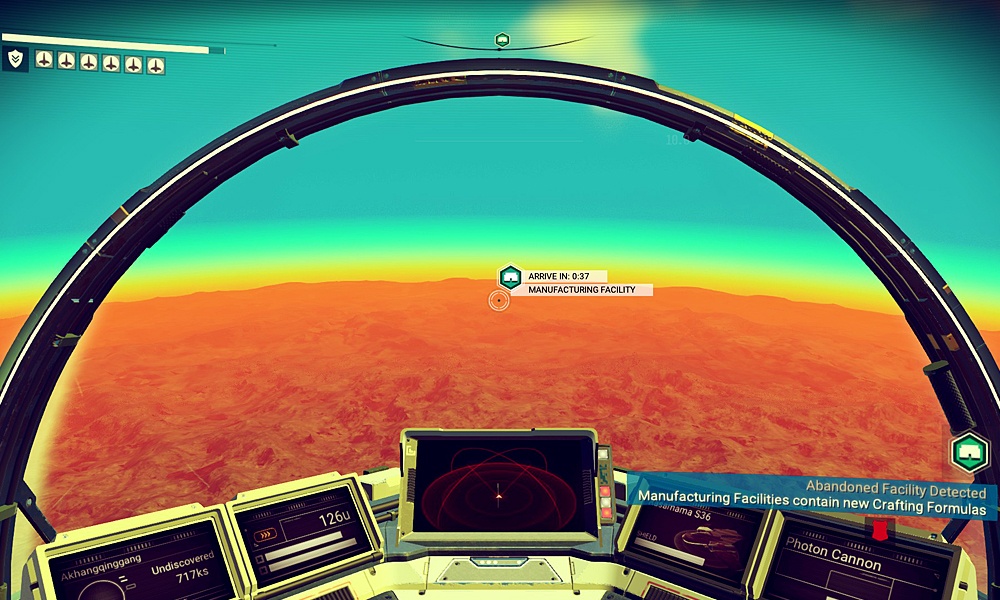You should expect a game like The Elder Scrolls: Skyrim, the open world fantasy game from Bethesda Game Studios, to offer a few hundred hours of entertainment. It’s the same with just about any iteration in the Fallout franchise. People scour every inch of the game’s map to find every secret, Easter Egg, and hidden area they can and even now, years after the games were released, people are still discovering things they never knew about.
In those games, the world, no matter how big or small, was designed by humans. Artists and engineers work together to create concept art, bring it to life, and fill the world with stories, characters, and terrain. Basically, everything you saw, someone put there deliberately.
This is not the case in No Man’s Sky.

Why No Man’s SkyIs So Unique
No Man’s Sky relies on an algorithm to generate its worlds, using a process those in the computing industry have dubbed “procedural generation.” There have been previous examples of procedural generation in gaming, but No Man’s Sky is the first game to attempt it on a truly universal scale. In total, there are more than 18.4 quintillion unique planets, all generated by math rather than constructed by a human. Writing every digit out, it comes to 18,446,744,073,709,551,616 planets to explore.
No Man’s Sky has so many planets, if you spent one second on every single one, it would take you roughly 585 billion years to see them all. That’s 130 times longer than Earth’s been around and 45 times older than our entire universe. It’s a long time. Hello Games expects that the majority of their planets will go completely unexplored. People in gaming have made claims like that before and their claims didn’t hold up quite the way they thought they would, but there’s 18 quintillion reasons to think Hello Games might be a little different.
So it’s bigger, with literally billions of years of potential content. It was so big, Hello Games sent bots out into their procedurally-generated universe and used them to collect gifs and video clips from some of the more interesting planets. They use it both as a proof of concept and sort of a quality assurance method.
If the developers are saying there’s at least a few hundred billion years of exploration to do, it sounds like this game should be a nightmare for storage. After all, smaller games than this have taken up dozens of gigs of storage. Middle-Earth: Shadow of Mordor requires a 44GB chunk and recommends a heftier 57GB, and the most recent Wolfenstein installment is in the same ballpark, coming in at 50GB. Fallout 4, another of Bethesda’s exploration games, comes in at a slightly smaller, but still considerable, 30GB. No Man’s Sky, for the literal worlds of possibility it looks to deliver, takes up a measly 10GB. This is because the planets aren’t actually stored on your hard drive. The algorithm simply tells the game what to display, rather than saving specific details. Depending on how you want to interpret that, you could argue you’re not seeing planets. You’re seeing math manifest.

Our Hands On Experience
It’s fun to hear the numbers thrown around, but it all sounds pretty abstract. None of us actually have a way of conceptualizing 18 quintillion. The closest we could probably get is the Hubble Deep Field. In those pictures, you have the star density of Earth’s night sky, if you’re looking where there’s no light pollution. But in those pictures, the lights that look like stars are galaxies, all of them with millions of stars and planets contained inside and some of them approaching billions of light-years away. Imagine those numbers, but as something you can explore, and you have No Man’s Sky.
We have a screenshot of us approaching an as-of-yet undiscovered planet, temporarily dubbed “Amramidimar,” with a space station positioned just above it. There are two time counters marked on the screen, one for the planet and one for the space station. Both have ETA’s of approximately one hour. We definitely didn’t wait an hour, opting instead for the very cool Pulse Drive, which cuts that time down to a matter of seconds, but the point is, those are the distances you’re dealing with in this game. Plus, once you get on-planet, you’re then dealing with planet-sized distances. It doesn’t take an hour to walk around the planet, it takes days.
Whether or not that sounds like fun to you isn’t the question. It’s whether or not something like this been done before. We’ve had pretty sizable maps in games already, so it’s not unexplored territory. The Elder Scrolls II: Daggerfall had an in game map about the size of Oklahoma, which is no small feat. Minecraft claims an infinite map, using similar procedural generation technology, but actual estimates put it at about 8 times the size of Earth.
We understood all of this going in and we thought got a pretty good handle on it in the first hour or two of messing around, but then we built our Hyperdrive. Ignore the sci-fi, nerdy language for a minute and buy in that this is what you need to get around to new planets. On our first use of the star system selection map, we decided to zoom out from our current system. Like, way out. That was our first confirmation that this game was truly unique.

There were what looked like thousands of glowing dots on the screen at any given point and we highlighted a few to make sure we weren’t looking at some cheap painted box. We weren’t. Every dot we highlighted had planets and moons and every system was undiscovered. We thought we’d hit at least one system with some dumb, Internet-bestowed name, but we didn’t. That was our first real encounter with the reality of the scale of what No Man’s Sky has accomplished.
The most interesting thing about it, it didn’t feel like a great crushing weight of isolation. If you’ll permit us to indulge in a bit of a cliche, it felt like possibility. Most of the pictures we’ve shown you in this article have been our own personal screenshots. No one else has those. People could certainly get them if they went to the planets we discovered and stood exactly where we stood and looked where we looked, but, at least for now, those are our planets. Other people’s planets might look similar, but when we came upon undiscovered planets, we were the first human players to set foot on them. It sounds cheesy, sure, and we get that, but in every video game ever, things are there because the developers arranged them. But our screenshots are things not even Hello Games has seen.

Should You Buy It
Yes. That’s our first, reactionary answer. But the reality of it is there are people for whom the answer is no. We’ll try to be clearer.
This is a game for people who took one look at the main quests of Fallout and Skyrim and walked off in the exact opposite direction. There’s very little structure and the only real quest is a barebones tutorial at the beginning of the game with a loose path to follow after that. The reward really is the exploration of places no one has seen before you. No Man’s Sky has a bit more of a distilled version of that, since, like we’ve said half a dozen times, even the developers don’t know what’s in their universe.
The answer’s no if you need structure and linear quests and “a point.” Because “the point” of the game is what we said in the paragraph before this one and if that’s not appealing to you, then don’t spend the money.
But don’t ignore this game. Whether or not you’re a gamer, stay current with it, because this is a new kind of technology, with effects that could be felt beyond gaming. Take at least part of your time with whatever social media you use to follow fans of the game and see what they’re discovering. People might actually share something worth looking at.




